From inside (document excerpt):
58DXT, 58UXT WeatherMaker® 8000 Two-Stage Induced-Combustion Gas Furnaces Visit www.carrier.com Service and Maintenance Instructions For Sizes 060-120, Series 110 NOTE: Read the entire instruction manual before performing any service or maintenance. This symbol indicates a change since the last issue. These procedures are for size 60,000 through 120,000 Btuh units. Index Page SAFETY CONSIDERATIONS 1-2 ELECTROSTATIC DISCHARGE (ESD) PRECAUTIONS PROCEDURE .2 CARE AND MAINTENANCE 2-7 Air Filter Arrangement 2-3 Blower Motor and Wheel 3-4 Cleaning Heat Exchanger 4-5 Electrical Controls and Wiring .5-7 Troubleshooting .7-10 Unit Wiring Diagram 8 Service Label 9 Troubleshooting Guide .10 SAFETY CONSIDERATIONS Installing and servicing heating equipment can be hazardous due to gas and electrical components.
Only trained and qualified personnel should install, repair, or service heating equipment. Untrained personnel can perform basic maintenance functions such as cleaning and replacing air filters. All other operations must be performed by trained service personnel. When working on heating equipment, observe precautions in the literature, tags, and labels attached to or shipped with the unit and other safety precautions that may apply. Follow all safety codes. In the United States, follow all safety codes including the National Fuel Gas Code NFPA No. 541996/ANSI Z223.1-1996. In Canada, refer to the current edition of the National Standard of Canada CAN/CGA-B149.1- and .2-M95 Natural Gas and Propane Gas Installation Codes and Amendment No. 1. Wear safety glasses and work gloves. Have fire extinguisher available during start-up and adjustment procedures and service calls. Recognize safety information. This is the safety-alert symbol. When you see this symbol on the furnace and in instructions or manuals, be alert to the potential for personal injury. Understand the signal words DANGER, WARNING, and CAUTION. These words are used with the safety-alert symbol. DANGER identifies the most serious hazards which will result in severe personal injury or death. WARNING signifies a hazard which could result in personal injury or death. CAUTION is used to identify unsafe practices which would result in minor personal injury or product and property damage. Fig. 1–Model 58UXT Horizontal A95137 ® ama CANADIAN GAS ASSOCIATION A PP R O VED R Fig. 2–Model 58DXT Downflow A94086 CERTIFICATION OF MANUFACTURING SITE A94085 Fig. 3–Model 58UXT Upflow Manufacturer reserves the right to discontinue, or change at any time, specifications or designs without notice and without incurring obligations. Book 1 4 PC 101 Catalog No. 535-834 Printed in U.S.A. Form 58D,U-4SM Pg 1 9-97 Replaces: 58D,U-1SM Tab 6a 8a The ability to properly perform maintenance on this equipment requires certain expertise, mechanical skills, tools, and equipment. If you do not possess these, do not attempt to perform any maintenance on this equipment other than those procedures recommended in the User’s Manual. A FAILURE TO FOLLOW THIS WARNING COULD RESULT IN POSSIBLE DAMAGE TO THIS EQUIPMENT, SERIOUS PERSONAL INJURY, OR DEATH. ELECTROSTATIC DISCHARGE (ESD) PRECAUTIONS PROCEDURE Never store anything on, near, or in contact with furnace, such as: 1. Spray or aerosol cans, rags, brooms, dust mops, vacuum cleaners, or other cleaning tools. 2. Soap powders, bleaches, waxes or other cleaning compounds, plastic or plastic containers, gasoline, kerosene, cigarette lighter fluid, dry cleaning fluids, or other volatile fluids. 3. Paint thinners and other painting compounds, paper bags or other paper products. A failure to follow this warning could result in corrosion of the heat exchanger, fire, personal injury, or death. Electrostatic discharge can affect electronic components. Take precautions during furnace installation and servicing to protect the furnace electronic control. Precautions will prevent electrostatic discharges from personnel and hand tools which are held during the procedure. These precautions will help to avoid exposing the control to electrostatic discharge by putting the furnace, the control, and the person at the same electrostatic potential. 1. Disconnect all power to the furnace. DO NOT TOUCH THE CONTROL OR ANY WIRE CONNECTED TO THE CONTROL PRIOR TO DISCHARGING YOUR BODY’S ELECTROSTATIC CHARGE TO GROUND. 2. Firmly touch a clean, unpainted, metal surface of the furnace chassis which is close to the control. Tools held in a person’s hand during grounding will be satisfactorily discharged. 3. After touching the chassis you may proceed to service the control or connecting wires as long as you do nothing that recharges your body with static electricity (for example; DO NOT move or shuffle your feet, DO NOT touch ungrounded objects, etc.). 4. If you touch ungrounded objects (recharge your body with static electricity), firmly touch furnace again before touching control or wires. 5. Use this procedure for installed and uninstalled (ungrounded) furnaces. 6. Before removing a new control from its container, discharge your body’s electrostatic charge to ground to protect the control from damage.


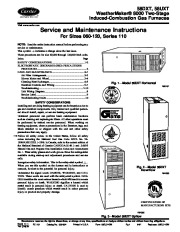 Carrier Owners Manual - Enlarge page 1 of 12
Carrier Owners Manual - Enlarge page 1 of 12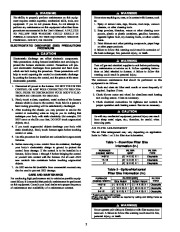 2 of 12
2 of 12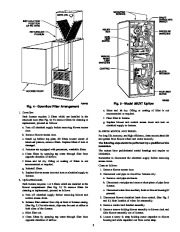 3 of 12
3 of 12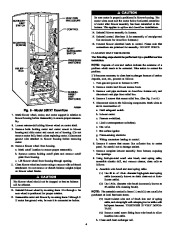 4 of 12
4 of 12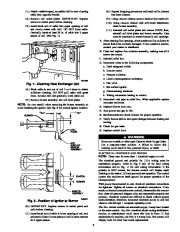 5 of 12
5 of 12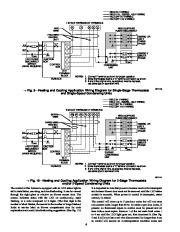 6 of 12
6 of 12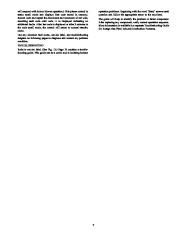 7 of 12
7 of 12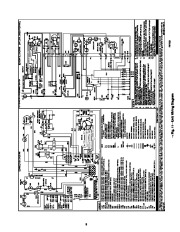 8 of 12
8 of 12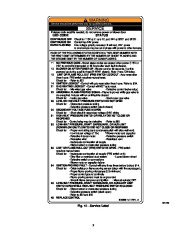 9 of 12
9 of 12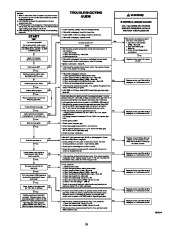 10 of 12
10 of 12 11 of 12
11 of 12 12 of 12
12 of 12